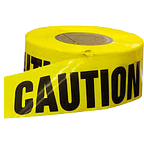Staying Put
The (Un)Ethics of Ignoring a Mandatory Evacuation Order
While you may now know Chris Christie as President Trump’s most strident defender outside of the administration (or, alternatively, as the guy who put Ivanka’s father-in-law in prison), his brash and indispensably New Jersey approach to risk communication saved countless lives during Superstorm Sandy in 2012. While he is often lauded for being a capable crisis manager during this storm, he should also be remembered as a leader who appreciated the risks faced by first responders and public safety personnel, and for valuing their lives equally with those of his other constituents.
With the storm forecast to make landfall the following day, just south of Atlantic City, Christie issued a mandatory evacuation order on Saturday, October 7, 2012. In his public announcement, he demonstrated a solid grasp of the National Hurricane Center’s forecasts, as well as surprising empathy for the citizens of New Jersey. A few hours later he held a press conference in front of a group of firefighters, and with characteristic flair, again reminded those intent on riding out the storm to evacuate the barrier islands, saying, “If something looks like it’s stupid to do, it is stupid.” In his original press conference announcing the mandatory evacuation orders, he asserted, “I’m not trying to be an alarmist here. I want everyone to be ready. I want your families to be safe and I want us to be able to do our jobs the right way.” But, what did he mean by “us” “be[ing] able to do our jobs the right way”?
He answered that question only an hour before the storm made landfall: “I can not — in good conscience — send rescuers in as the storm is about to hit.” He told both local elected officials (specifically, Mayor Langford of Atlantic City), as well as those citizens who decided to ride out the storm, that help was not coming — at least until it was safe for responders. Specifically, he told them:
“So, for those of you on the barrier islands who thought it was a better idea to wait this out than to evacuate, for those elected officials who decided to ignore my admonition, this is now your responsibility. If you’re still able to hear me, we need you to hunker down and get to the highest point possible in the dwelling that you’re in. We will not be able to help you until daylight tomorrow.”
Christie wasn’t just being a scold and saying ‘I told you so’; he was also saving first responders from their own impulses. He recognized something that ethicists have long observed with regard to firefighters, police, and emergency medical practitioners: if they see somebody in danger, they will run to help them, often without regard for their own safety (or other costs). The Rule of Rescue (RR), first coined by A.R. Jonsen in 1986, is described as “the imperative people feel to rescue identifiable individuals facing avoidable death.”
In an incident response scenario, when government officials set expectations about ethical obligations early — and remind citizens of those obligations frequently — they can save lives. Not only does this ethical approach save the lives of the general public, it also reduces the risk to first responders. New Jersey is also an interesting case legally, since responders are not bound by the “Firefighter’s Rule” that binds responders in other states from seeking damages against negligent members of the public if they are injured trying to rescue them. In 1995, New Jersey’s legislature passed the “Firemen’s Act,” which states that firefighters (and other first responders) can seek damages “directly or indirectly the result of neglect, willful admission, or willful or culpable conduct of any person or entity, other than the law enforcement officer, firefighter or first aid ambulance or rescue squad member.”
As citizens, we face decisions like this every day. These ethical dilemmas aren’t simply reserved for extreme cases of disaster. On Mount Hood, Oregon, in 2002, eight hikers fell into a crevasse, and an Air Force reserve helicopter crashed while attempting to rescue them, putting additional lives at risk. Fortunately, these airmen survived, as did five of the eight hikers. While this event was a series of unfortunate accidents, two days earlier, two Oregon State University students died attempting to climb Mount Rainier, Washington, despite warnings that weather conditions would likely deteriorate during their hike.
Similarly, if you are enjoying a day at the beach, follow posted orders, especially if there are red flag warnings (going into the water is not recommended unless you are a very strong swimmer). At Newport Beach, California, in 2014, a swimmer had to be rescued by a lifeguard, who braved dangerous conditions. The lifeguard ended up drowning when a large wave overtook him.
While some places now mandate a rescue fee (see: Oregon’s Reimbursement Law 404.270, which allows rescue agencies to charge hikers who do not practice “reasonable care”), much of this is a personal responsibility.
Hopefully this glimpse inside the yellow tape offered you a new perspective on the risks that public safety professionals face, and has provided you with a new perspective on common sense strategies you can use to help lower those risks.
